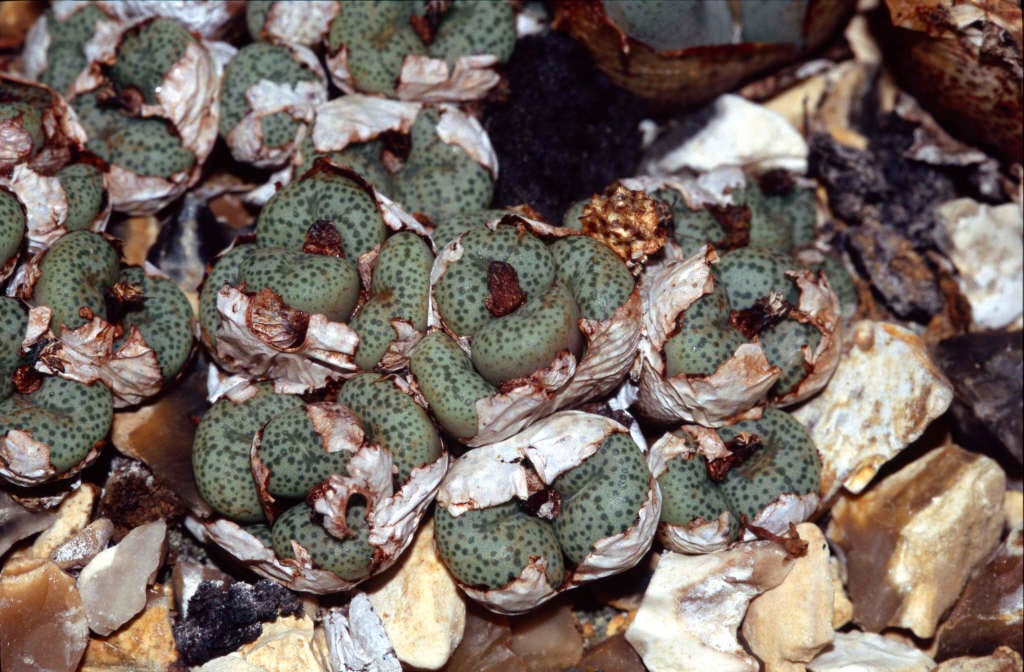Conophytum obcordellum
obcordellate cone plant
A mat-forming succulent with greyish, ellipsoid leaf-pairs and white flowers 1.5cm across in late summer
Other common names
greater dumplingSynonyms
Conophytum declineatumConophytum impressum
see moreConophytum nevillei
Conophytum parviflorum
Conophytum picturatum
Conophytum obconellum
Conophytum parvipetalum

Size
Ultimate height
Up to 10cmTime to ultimate height
2–5 yearsUltimate spread
0–0.1 metreGrowing conditions
Moisture
Well–drainedpH
Acid, Alkaline, NeutralColour & scent
| Stem | Flower | Foliage | Fruit | |
| Spring | Green Grey Silver | |||
|---|---|---|---|---|
| Summer | White | Green Grey Silver | ||
| Autumn | Green Grey Silver | |||
| Winter | Green Grey Silver |
Position
- Full sun
Aspect
East–facing or South–facing or North–facing or West–facing
Exposure
Sheltered Hardiness
H2Botanical details
- Family
- Aizoaceae
- Native to GB / Ireland
- No
- Foliage
- Evergreen
- Habit
- Bushy
- Genus
Conophytum are dwarf succulent perennials forming clumps of "bodies" comprising a pair of very fleshy leaves, united in the lower part, with solitary daisy-like flowers appearing from the central fissure; the leaves usually shrivel after flowering
- Name status
Correct
- Plant range
- S Africa (W Cape)
How to grow
Cultivation
Grow under glass in a mixture of two parts each sharp sand and loam and one part leaf mould, in full light. Provide low humidity. Water sparingly when in growth and keep completely dry at other times. No additional fertilizer is needed
Propagation
Propagate by seed sown in gentle heat with high humidity reduce the humidity after germination. Propagate by offsets may be taken
Suggested planting locations and garden types
- Patio and container plants
Pruning
No pruning required
Pests
May be susceptible to aphids
Diseases
Generally disease-free
Get involved
The Royal Horticultural Society is the UK’s leading gardening charity. We aim to enrich everyone’s life through plants, and make the UK a greener and more beautiful place.